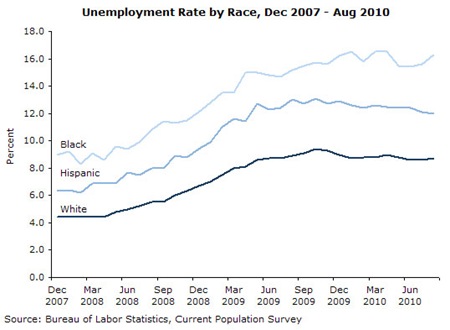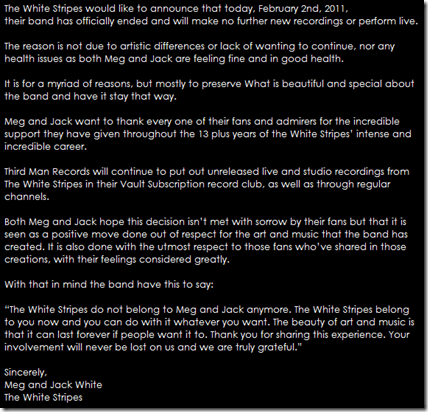You might not know what the above is a picture of, but to me it’s a picture of me sleeping in my own bed every night, and having my family together for more than a couple of hours in a hospital room every day. It’s the canister into which son’s NG tube feeds, and, if you look really closely, you will see that the goo draining into it is clear. Clear goo means the bilious goo that had been pooling in his stomach has started to go somewhere else—down through his bowel— which means that we are (hopefully) rounding the final turn towards home. We’re not home yet (still maybe as much as another week or more), but we’re the closest we’ve been in the past 16 days.
I cannot put into words how much everyone’s emails and tweets of care and support have meant to me. The compassion of strangers often outweighs that of people we’ve known for years. And for that compassion I will forever owe everyone a debt of gratitude.
Here’s what I read this week:
Social Media & Workplace Technology
- Make Sure Your Lawyer Knows How To Use Facebook – from Kashmir Hill’s The Not-So Private Parts
- The March of Technology – from LaborRelated
- Want a Job? Give us Your Facebook Password – from employeescreenIQ Blog
- Maryland’s Division of Corrections Demands Applicants Provide Facebook Usernames and Passwords During Interviews – from Shear on Social Media Law
- Blogging ain’t dying among lawyers – from Kevin O’Keefe’s Real Lawyers Have Blogs
- Facebook for Jury Selection – from Rob Radcliff’s Smooth Transitions
- Should Business Owners Take a Cue From Attorneys? – from Wall Street Journal’s In Charge Blog
Labor Relations
- Is This the Teachers Unions Alamo or a Chance for Resurgence? – from Robert Schwartz writing at the Huffington Post
- Paul Secunda’s amazing coverage of the Wisconsin public employee labor battle – from Paul’s twitter feed
- NLRB Judge Orders Company to Reinstate Striking Workers, Resume Negotiations – from Joe’s HR and Benefits Blog
- The Battle Lines Are Being Drawn – from The Ohio Labor Lawyer
- Trade Unions and Social Media Policies: An Explosive Mixture – from Social Media Today
- NLRB Continues Aggressive Campaign – from Employer Law Report
- Continued Attacks on Employer Actions and No-Solicitation Policies – from Labor Relations Counsel
- Public Sector Bargaining Rights Battle Rages – from Vorys on Labor
Discrimination
- Should I Fight Or Settle: The Strategic Business Decision – from Daniel Schwartz’s Connecticut Employment Law Blog
- Was that a request for an ADA accommodation? Or just griping? – from by Stephen Meyer’s HR Cafe
- Plaintiffs’ Merits Brief Filed In Dukes – from Workplace Class Action Litigation
- Why isn’t Sex Discrimination Disappearing? – from Philip Miles’s Lawffice Space
- Evolving Technology and “Textual Harassment” – from New York City Employment Lawyer
- Gender Discrimination Or Choice? A Tale of Two Sisters – from Stephanie Thomas’s The Proactive Employer Blog
- Reverse Race Discrimination Claim Fails Because Employee Voluntarily Resigned – from Raising the (Missouri Employment Law) Bar
- Is HR Helping Employer Skirt Discrimination Laws? We Can Do Better – from TLNT
- Age Discrimination Case Rocks the BBC, Fueling International Debate about Discrimination in TV and Film – from Employment Lawyer Blog
HR & Employee Relations
- The Words Many Managers Are Afraid To Say – from the Harvard Business Review
- An Update on Why What Happens in the World is Important to HR – from Michael Haberman’s Omega HR Solutions
- Can an employee be fired for using medicinal marijuana? – from Eric Meyer’s The Employer Handbook Blog
- How Not to Discipline an Employee for Theft – from Workplace Prof Blog
- 6 Reasons You Shouldn't Quit Without Notice – from Evil HR Lady, Suzanne Lucas
- Superior Court Recognizes Another Exception to the Pennsylvania At-Will Employment Doctrine – from Pennsylvania Labor and Employment Blog
- Bringing Laughter Back Into Your Life – from Ohio Family Law Blog
- Doctor’s note for all sick calls? Here are 5 reasons I wouldn’t – from Employment and Labor Insider
Wage & Hour
- Is Your Unpaid Internship Illegal? – from Screw You Guys, I’m Going Home
- Should pharmaceutical sales representatives be paid overtime? It depends on where they’re located (for now) – from Overtime Advisor
- Picking off FLSA Plaintiffs – from Employment Class Action Blog
- Uh-oh: “Telecommuting: The Next Wave of Wage and Hour Litigation” – from Walter Olson’s Overlawyered
- Overtime Pay Violations Occur Each Time You Receive A Paycheck Without The Pay You Deserve – from Overtime Lawyer Blog
- The Use Of Independent Contractors and Immigration – from Rush on Business
- Fog Still Shrouds The Bridge To Justice – from Wage and Hour Laws Blog
- Mishandling FMLA Leave for Alcohol Treatment Causes Employer to Fall Off the Wagon – from FMLA Insights
Competition and Trade Secrets
- What Every CEO Should Ask the General Counsel About the Company’s Trade Secrets – from Trade Secrets & Non-Compete Blog
- What Happens If a Company Does Not Enforce Its Non-Compete Agreements? – from Legal Developments In Non-Competition Agreements
- Feast Your Eyes on Koncision’s New Severability Provision – from Kenneth Adams’s Koncision
Presented by Kohrman Jackson & Krantz, with offices in Cleveland and Columbus. For more information, contact Jon Hyman, a partner in our Labor & Employment group, at (216) 736-7226 or jth@kjk.com.





